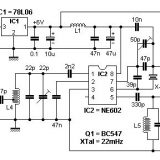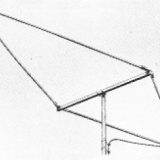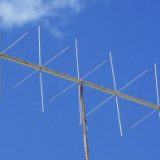Bench AF Amplifier. Schematic Diagram.
The circuit…
This circuit consists of just a few discrete components and one common IC amplifier – the LM380N. It’s simple, cheap, quick to build and works well. I built mine in a steel, pre-painted case available from Maplin UK. order number: XY44X. Dimension are approx. W=150mm x D=150mm x H=75mm.
I originally intended to power the unit from a 9v battery. But as there was still plenty of room in the case after the PCB had been mounted, I decided to go the whole nine-yards and power the amp from a small mains transformer. The one I used was robbed from an old cassette tape player and measured approx. 30mm square. A 5Amp full-wave bridge rectifier (a bit of an overkill, but was all I had at the time) was mounted next to this.
The PCB has been designed to hold the audio gain control, VR1. This, when mounted on the front panel will be sufficient to hold the PCB in place but, for a bit more added support, I fixed a nut, bolt and spacer at the opposite end of the board – everything is now nice and stable.
If you decide to build this, make sure to keep the transformer as far away as possible from the input sockets. Also, make a good Earth connection between the metal case and the transformer casing then take this to the ground (0.V) rail on the PCB. This will ensure minimum 50Hz / 60Hz hum being heard on the output.
A 2.5W 80mm speaker (robbed from a dead CB radio) was mounted on the top inside case cover. Using the CB case where the speaker was mounted acted as an excellent template for drilling sound holes on the amplifier cover. A total of 116 4mm holes were drilled and slightly countersunk to remove all the burrs and chaffe. A real boring task but worth the effort ’cause I got a neat, uniform finish – a real professional look!
Next, I drilled five holes on the front panel to suit the on/off switch (S1), phono socket, (input), rotary selector switch (S2), AF gain control (VR1) and finally, the 5mm LED. Rub-down ‘letraset’ was used to label all the controls giving the appearance of a commercial unit. Looks damn neat, too!

On power up, there is no hum present on the ouput and the overall volume is more than ample for what I need. When I connect my HF receiver REC output to the Hi input, the AF gain need only be set somewhere around one-quarter of max. to start my YL whinging about the volume!
Finally… Mains Voltage is present here!. You shouldn’t need any reminding of the danger. If you electrocute yourself, don’t blame me!






















Last Comments